Learn the differences between salted and unsalted butter and which is better for baking.
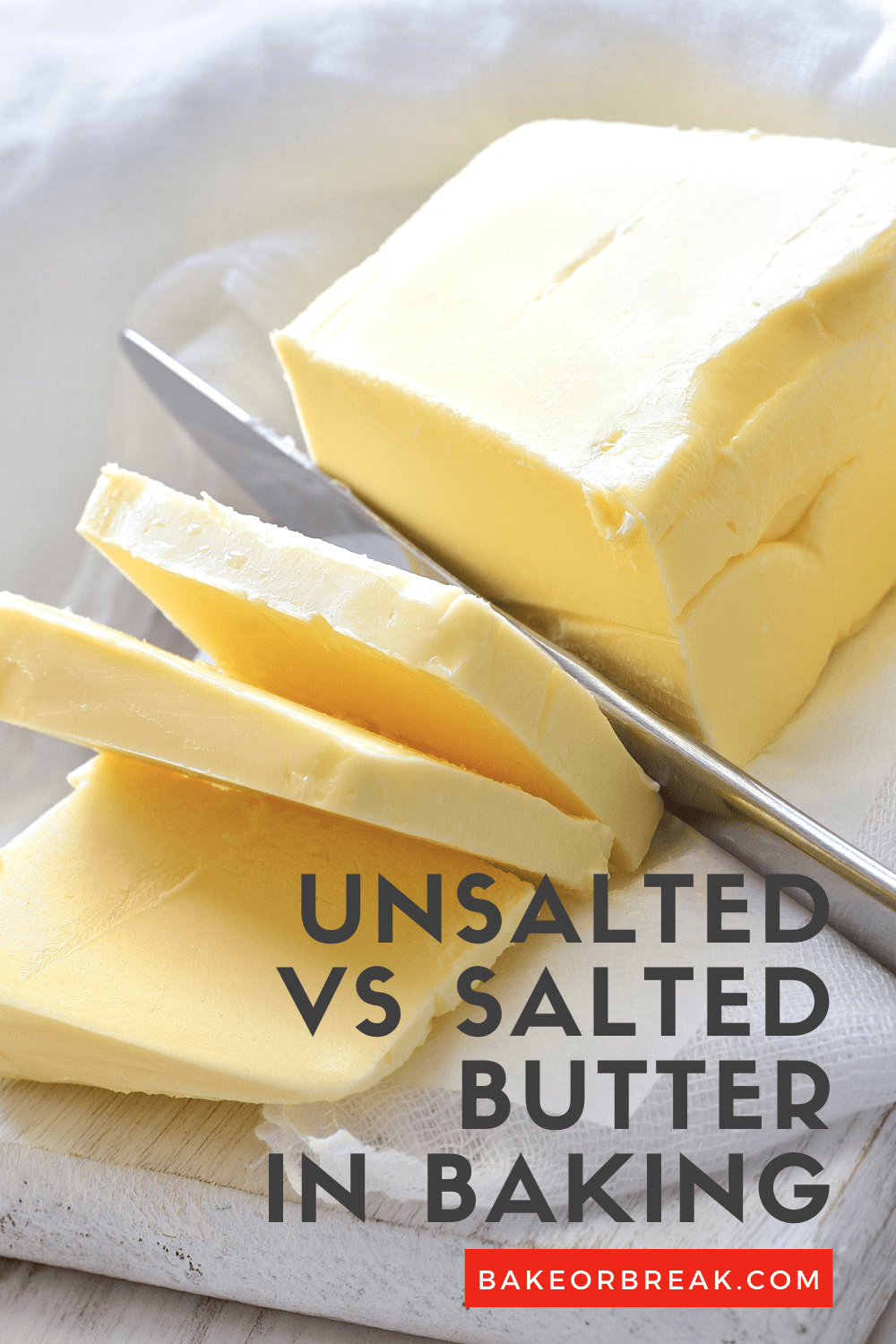
Unsalted vs Salted Butter
The baking recipes here on Bake or Break almost all list unsalted butter as an ingredient. Many, many times, I’ve been asked if salted butter can be used in place of unsalted butter. That’s a bit of a tricky question because there are some differences between the two that should be considered before making that substitution.
What Butter Does in Baking
First, let’s talk a bit about why butter is the star of baking show. Butter is an essential ingredient in traditional baking. It provides flavor, moisture, and fat to baked goods. Fat is important in baked goods because it helps to create a tender and moist crumb. Of course, butter also adds flavor to baked goods. The type of butter that you use can impact the flavor of your final product.
Most butter you’ll find on American grocery store shelves is sweet cream butter and will be labeled as either unsalted or salted. By U.S. federal regulations, it has a fat content of 80%. The rest is water and a small of amount of milk fat solids. Butter also is graded for quality, with U.S. Grade AA being the best. That and Grade A are the most likely to be found in grocery stores.
What’s the Difference Between Salted and Unsalted Butter?
In simplest terms, the main difference between salted and unsalted butter is the presence of salt. While they both have great butter flavor, you’ll find regular table salt, kosher salt, sea salt, or another type of salt added to salted butter to give it a saltier taste.
However, there are some other differences as well. The good folks at Cooks’ Illustrated have also found that salted butter usually contains more water than unsalted butter.
You’ll also find that the shelf life of butter is affected by the presence of salt. Salt acts as a preservative, meaning that salted butter will have a longer shelf life. Check the expiration dates when shopping for butter, as the unsalted varieties are likely to be fresher.
Why I Recommend Baking with Unsalted Butter
You’ll find that I recommend baking with unsalted butter in almost all of my recipes. That may seem odd when there’s often also added salt in the recipe. But there are some very good reasons for that, and it’s not just about saltiness.
Primarily, I prefer baking with unsalted butter because it gives complete control over the amount of salt in baking recipes. The package label will tell you salt is present but not what the specific sodium content is. With a varying amount of salt content among brands of salted butter, you’re never quite sure how much salt you’re getting.
Remember that precise measurements are always important in baking. Being unsure how much salt you’re adding when using salted butter can create flavor issues, and sometimes even texture and browning differences. Salt brings out the flavors of other ingredients, too, so altering it can definitely affect the outcome.
Secondly, the potential increase in the amount of water in salted butter can greatly affect how your doughs and batters behave. The texture and browning of the finished baked good may not be as expected, sometimes creating significant differences. The more butter needed in the recipe, the bigger a problem this can be. Something like a 3-stick-of-butter pound cake will magnify this issue.
Thirdly, it’s worth considering that because of the lack of salt as a preservative, it has a longer shelf life. So, the unsalted butter with its shorter shelf life is probably fresher.
When to Use Salted Butter
So, what do you do with that salted butter in your refrigerator? Use it when the specific amount of salt isn’t an issue. That means you can use it often in cooking, if not for baking.
Salted butter is also wonderful to spread onto homemade bread or a fresh muffin. For use as a spread, salted butter just tastes better to most of us.
While salted butter may be perfect for spreading on crusty bread or topping a savory dish, go with unsalted butter for recipes like classic chocolate chip cookies, pie crusts, and banana bread. My one exception is 3-Ingredient Shortbread Cookies, where I recommend using salted butter.
How to Substitute Salted Butter for Unsalted Butter
If you’re ready to bake and only have salted butter in your refrigerator, you can still use it with some adjustments. Because the amount of salt can vary greatly among brands, there’s no hard and fast rule for adjusting the amount of salt in a recipe when using salted butter. As a general rule of thumb, if you use salted butter in a baking recipe that calls for unsalted butter, try reducing the salt in the recipe by 1/4 teaspoon for every 1/2 cup of butter. It may not work perfectly in every recipe, but it will likely work well enough in a pinch.
How to Substitute Unsalted Butter for Salted Butter
If your recipe calls for salted butter and you have unsalted butter, the reverse substitution applies. For every 1/2 cup of salted butter in the recipe, add 1/4 teaspoon salt.
Frequently Asked Questions
The most obvious difference is the absence or presence of salt. However, salted butter usually has a higher moisture content as well.
Most bakers prefer baking with unsalted butter. The amount of salted butter varies by brand, so using unsalted butter provides better flavor control. Beyond that, salted butter can have an adverse affect on texture and browning.
As with any recipe, the best ingredients are the ones listed. That is how the recipe was tested, after all. To use what you have on-hand, see the suggested substitutions above.
This is potentially tricky. For baking recipes, I assume unsalted butter is being used. You can possibly look at the amount of salt in the recipe and try to discern what will work best.
You can use the salted variety if you prefer a higher level of saltiness, but keep in mind that your baked goods may also vary in texture and appearance in addition to the extra salty flavor.



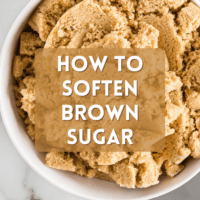
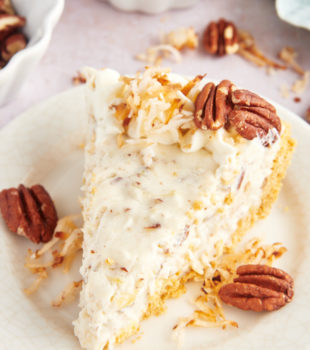

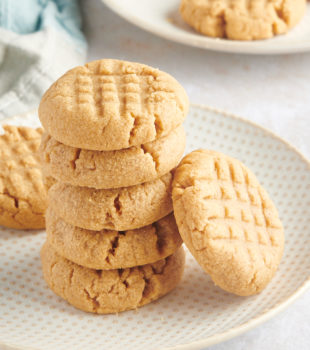


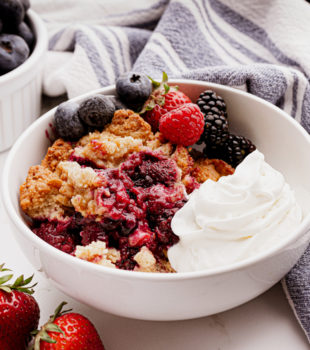
One Comment on “Unsalted or Salted Butter: Which is Better for Baking?”
I am a salted butter baker. But I was raised on salted butter. I find baked goods that are made with unsalted butter taste “flat” – not sure if that’s a baking term but I can really tell the difference when unsalted is used. JMHO 😆